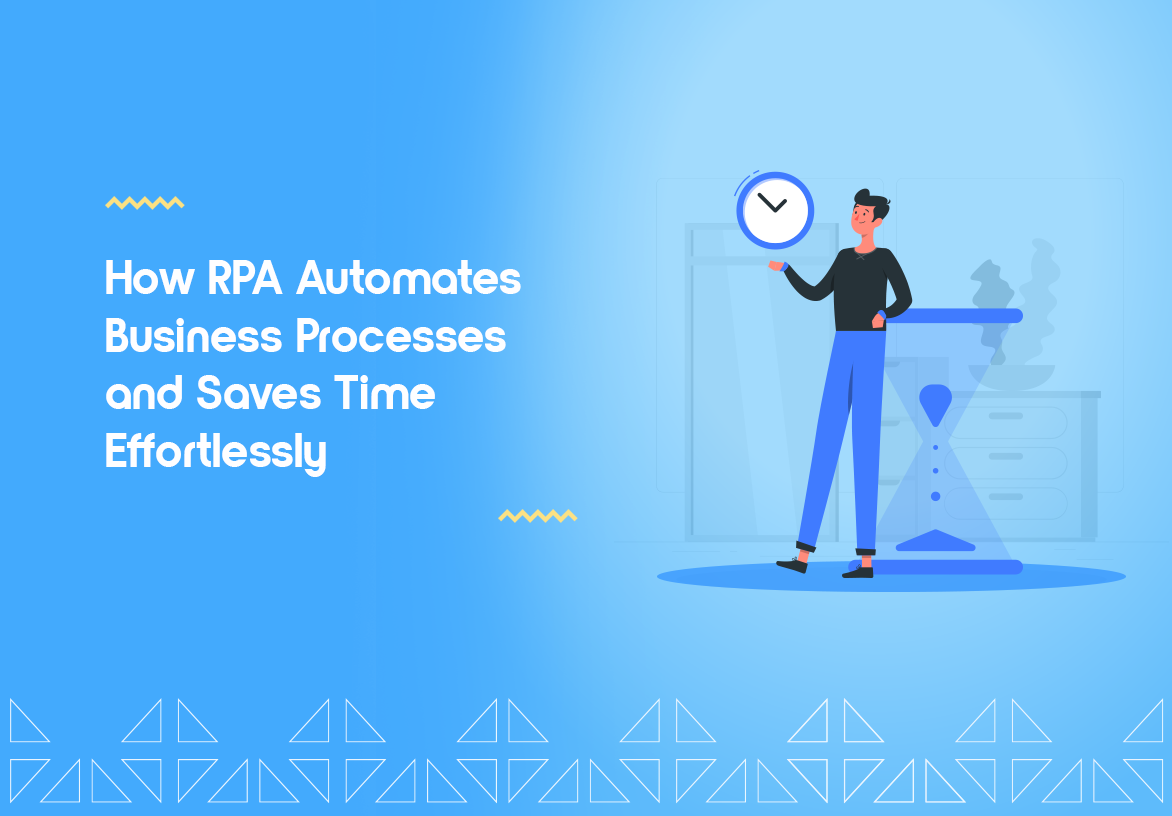How RPA Automates Business Processes and Saves Time
Repetitive tasks slow down your business. Discover how Robotic Process Automation (RPA) speeds up workflows, reduces errors, and boosts efficiency.
How RPA Automates Business Processes and Saves Time Effortlessly
Repetitive, manual tasks drain time, slow productivity, and leave businesses vulnerable to human error. Whether it’s entering data into spreadsheets, processing invoices, or handling customer inquiries, these tasks take up valuable hours that could be spent on more meaningful work.
That’s where Robotic Process Automation (RPA) comes in. RPA allows businesses to automate repetitive tasks, reduce mistakes, and free up employees for higher-value activities. Companies across industries embrace RPA to streamline operations, cut costs, and boost efficiency. But how does it work, and what can it do for your business?
Let’s break it down.
What is Robotic Process Automation (RPA)?
At its core, RPA is software that mimics human actions to perform tasks automatically. These “bots” interact with applications, enter data, move files, and even respond to simple customer inquiries; just like a human employee but faster and without errors.
Why RPA Matters
. Eliminates Human Error – Bots follow programmed
instructions without making mistakes.
. Increases Speed – Tasks that take hours manually
can be done in minutes.
. Enhances Productivity – Employees focus on strategic work
instead of admin tasks.
. Reduces Costs – Fewer manual tasks mean lower labor costs and
improved efficiency.
With the ability to automate repetitive workflows, RPA helps businesses operate smarter and scale faster.
Choosing the Right RPA Tool
Selecting the right tool depends on your business size and industry. Here’s a quick comparison:
RPA Tool | Best For | Pros | Cons |
UiPath | Large enterprises | User-friendly, strong AI integration | Higher cost |
Automation Anywhere | Scalable automation for various industries | Cloud-native, flexible pricing | Requires advanced setup |
Blue Prism | Financial & security-focused industries | High security, enterprise-grade automation | Less intuitive for beginners |
When selecting an RPA solution, consider scalability, integration with existing systems, and ease of implementation to find the best fit for your organization.
The Biggest Benefits of RPA for Businesses
1. Saves Time
Repetitive processes like data entry, report generation, and email responses are automated, reducing workload and speeding up operations.
2. Reduces Errors
Manual data handling increases the risk of mistakes. RPA eliminates typos, duplicate entries, and incorrect calculations.
3. Cuts Costs
With less manual labor required, companies save on payroll costs while increasing efficiency.
4. Boosts Employee Productivity
Instead of wasting time on repetitive tasks, employees can focus on customer service, strategy, and innovation.
5. Improves Compliance
Many industries require strict regulatory compliance. RPA ensures tasks are executed accurately and consistently, reducing compliance risks.
According to Gartner, businesses that adopt RPA see a 30-50% reduction in manual processing time, allowing teams to redirect efforts toward high-value work. This demonstrates how automation directly impacts efficiency and cost savings.
Real-World Examples of RPA in Action
Businesses worldwide are already using RPA to automate tedious processes. Here’s how different industries benefit:
1. Finance & Accounting
. Automates invoice processing, fraud detection, and payroll
management.
. Reduces errors in financial reports and tax filings.
2. Healthcare
. Manages patient records, insurance claims, and appointment
scheduling.
. Reduces paperwork and improves patient care efficiency.
3. Customer Service
. Chatbots handle basic inquiries, password resets, and
troubleshooting.
. Reduces wait times and improves customer satisfaction.
4. HR & Payroll
. Automates employee onboarding, payroll calculations, and
compliance reporting.
. Ensures accurate salary payments and document verification.
How to Successfully Implement RPA in Your Business
Thinking about introducing RPA into your operations? Here’s a step-by-step guide:
Step 1: Identify Repetitive Tasks
Pinpoint processes that consume too much manual effort, such as data entry, invoice approvals, or customer queries.
Step 2: Choose the Right RPA Tool
Popular tools include:
. UiPath – Great for enterprise-wide automation.
. Automation Anywhere – Ideal for scalable automation solutions.
. Blue Prism – Best for businesses needing advanced security features.
Step 3: Start Small & Scale Up
Begin with one or two processes, measure success, and expand automation gradually.
Step 4: Train Your Team
Employees should understand how RPA works and how to work alongside bots.
Step 5: Measure Performance
Track improvements in efficiency, cost savings, and error reduction to optimize automation strategies.
Read More: Agile: The Future of Project Management
Common Myths and Misconceptions About RPA
1. “RPA Will Replace All Jobs”
False. RPA enhances jobs by eliminating repetitive tasks, allowing employees to focus on creative and strategic work.
2. “Only Big Companies Can Use RPA”
Not true. Small and medium businesses (SMBs) can also leverage RPA to streamline operations and reduce costs.
3. “RPA is Expensive and Hard to Implement”
While enterprise-level RPA solutions exist, many tools offer affordable, easy-to-implement options.
The Future of RPA and Business Automation
Automation is evolving, and RPA is at the center of this transformation. Here’s what’s next:
1. AI-Powered Automation
RPA combined with artificial intelligence (AI) and machine learning will make bots smarter and more adaptive.
2. Hyperautomation
Companies are integrating multiple automation technologies (AI, RPA, data analytics) for faster and more efficient processes.
3. Expanding RPA Adoption
More industries; including retail, logistics, and government sectors; are adopting automation to enhance operations.
To Wrap Things Up
RPA is no longer a luxury; it’s a necessity for businesses looking to reduce costs, eliminate errors, and improve efficiency. By automating repetitive tasks, companies free up employees to focus on work that truly drives growth.
Why RPA Matters:
. Saves time by eliminating manual tasks
. Reduces human error and increases accuracy
. Boosts productivity and employee satisfaction
. Improves compliance and scalability
At Zcoderz, we help businesses integrate custom RPA solutions that fit their unique needs. Whether you’re automating simple workflows or transforming entire processes, we’ve got you covered.
Ready to automate your business? Contact us today and let’s build smarter workflows together.

